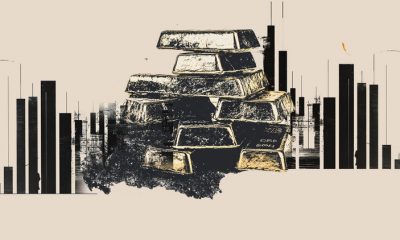

others
US Dollar softer with Fed’s Goolsbee and Bostic being split on the path forward – Crypto News
- The US Dollar retreats a touch on Monday after failing to break Friday’s high.
- Traders are looking forward to a very choppy trading week, with a bank holiday on Friday.
- The US Dollar Index steadies in the mid-104.00 range ahead of GDP and PCE data.
The US Dollar (USD) is retreating a touch on Monday ahead of the US session in a rather calm week ahead, with many trading desks and markets across the globe closed on Good Friday. Traders will likely continue to speculate on whether the Fed’s thesis of three cuts for this year is still valid, with a few interesting leading economic indicators and US Gross Domestic Product (GDP) numbers at hand. As if that is not enough, on Good Friday (with thin liquidity and most markets closed), the US will release the Fed’s preferred inflation gauge: the Personal Consumption Expenditures (PCE) Price Index for February.
On the economic data front, Monday offers a soft opening for the trading week with only US New Home Sales as the data point to trade on. Three US Federal Reserve members are due to make an appearance: Lisa Cook, who is a member of the Board of Governors at the Fed, Chicago Fed President Austan Goolsbee and Atlanta Fed Raphael Bostic, with Bostic repeating his stance for just one cut while Goolsbee rather sees three as best scenario.
Daily digest market movers: Fed turns into a box match
- The People’s Bank of China (PBoC) fixed its Yuan substantially stronger against the US Dollar, triggering a lower USD/CNH, which, in a domino effect, puts the Greenback on the backfoot.
- The release of Minutes from the latest Bank of Japan meeting saw equities in Japan plunge as the documents signalled that the BoJ is considering to hike interest rates more than what markets were expecting.
- This Monday kicks off with New Home Sales data for February at 14:00 GMT. In January, sales rose by 1.5%.
- Three Fed speakers on the docket for this Monday:
- Atlanta Fed President Raphael Bostic has already spoked and repeated his call for just one rate cut for this year.
- Chicago Fed President Austan Goolsbee could not be further apart from Bostic, by saying three cuts are the best scenario forward.
- US Fed Board member Lisa Cook will speak around 14:30 GMT.
- The US Treasury is set to allocate three fresh bond issuances this Monday:
- A 3-month and a 6-month bill near 15:30 GMT.
- A 2-year note is expected to be placed at 17:00 GMT.
- Equities are falling sharply on Monday. Asia indices are down, led by Japan’s Nikkei, which closed off at more than 1% in the red ¡. Europe is following suit, with a negative opening for both the Stoxx 50 and the German Dax, while US Futures are roughly flat.
- According to the CME Group’s FedWatch Tool, expectations for the Fed’s May 1 meeting are at 89.2% for keeping the fed funds rate unchanged, while chances of a rate cut are at 10.8%.
- The benchmark 10-year US Treasury Note trades around 4.2%, ralying off the low with the high of 4.34% last week as target.
US Dollar Index Technical Analysis: Fed division getting bigger
The US Dollar Index (DXY) is trading broadly steady above 104.00. However, some easing could be in the cards this week as the Greenback looks for that equilibrium between the dovish Fed and the rather challenging markets on that possible outcome. The truth will probably be somewhere in the middle, which means the DXY could retreat a few points to challenge 104.00 and snap below this barrier by the end of the week.
The DXY is still eyeballing that pivotal level near 104.60, where last week’s rally peaked out. Further up, 104.96 remains the first level in sight. Once above there, the peak at 104.97 from February comes into play ahead of the 105.00 region, with 105.12 as the first resistance.
Support from the 200-day Simple Moving Average (SMA) at 103.72, the 100-day SMA at 103.50, and the 55-day SMA at 103.61 are getting a fresh chance to show their importance. The 103.00 big figure looks to remain unchallenged for now after the decline from the Fed meeting last week got turned around way before reaching it.
Fed FAQs
Monetary policy in the US is shaped by the Federal Reserve (Fed). The Fed has two mandates: to achieve price stability and foster full employment. Its primary tool to achieve these goals is by adjusting interest rates. When prices are rising too quickly and inflation is above the Fed’s 2% target, it raises interest rates, increasing borrowing costs throughout the economy. This results in a stronger US Dollar (USD) as it makes the US a more attractive place for international investors to park their money. When inflation falls below 2% or the Unemployment Rate is too high, the Fed may lower interest rates to encourage borrowing, which weighs on the Greenback.
The Federal Reserve (Fed) holds eight policy meetings a year, where the Federal Open Market Committee (FOMC) assesses economic conditions and makes monetary policy decisions. The FOMC is attended by twelve Fed officials – the seven members of the Board of Governors, the president of the Federal Reserve Bank of New York, and four of the remaining eleven regional Reserve Bank presidents, who serve one-year terms on a rotating basis.
In extreme situations, the Federal Reserve may resort to a policy named Quantitative Easing (QE). QE is the process by which the Fed substantially increases the flow of credit in a stuck financial system. It is a non-standard policy measure used during crises or when inflation is extremely low. It was the Fed’s weapon of choice during the Great Financial Crisis in 2008. It involves the Fed printing more Dollars and using them to buy high grade bonds from financial institutions. QE usually weakens the US Dollar.
Quantitative tightening (QT) is the reverse process of QE, whereby the Federal Reserve stops buying bonds from financial institutions and does not reinvest the principal from the bonds it holds maturing, to purchase new bonds. It is usually positive for the value of the US Dollar.
-

 Blockchain1 week ago
Blockchain1 week agoCrypto Hedge Fund Veterans Seek $100M to Buy BNB, Emulating Saylor’s Bitcoin Strategy – Crypto News
-

 Blockchain1 week ago
Blockchain1 week agoChange In US Crypto Laws May Affect Charges In Do Kwon’s Criminal Case – Crypto News
-

 Technology1 week ago
Technology1 week agoBranded smartwatches under ₹5000 for style and functionality: Top 10 picks for everyday wear – Crypto News
-

 Blockchain1 week ago
Blockchain1 week agoBest Crypto to Buy as Polymarket Nears $1B Valuation – Crypto News
-

 Technology1 week ago
Technology1 week agoTop 10 air coolers for monsoon: Handpicked products for effective cooling from trusted brands – Crypto News
-
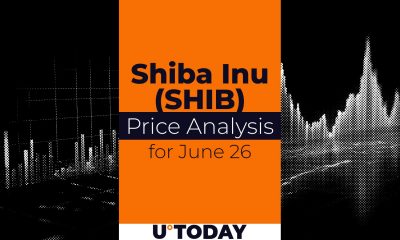
 Cryptocurrency7 days ago
Cryptocurrency7 days agoSHIB Price Prediction for June 26 – Crypto News
-

 others6 days ago
others6 days agoGold retreats while Fed Powell and President Trump clash over interest rates – Crypto News
-

 Cryptocurrency5 days ago
Cryptocurrency5 days agoFriday charts: Retail is one-upping Wall Street – Crypto News
-

 others1 week ago
others1 week agoPolemos Launches PLMS Token On MEXC and Uniswap, Advancing Web3 Gaming Infrastructure – Crypto News
-

 Cryptocurrency1 week ago
Cryptocurrency1 week agoStory (IP) surges after whales buy 16M tokens – Crypto News
-

 others1 week ago
others1 week agoRich Dad Poor Dad Author Says ‘Biggest Crash in History’ Approaching While Baby Boomers Lose Retirements to Inflation – Crypto News
-
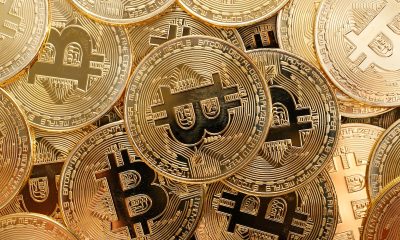
 Blockchain1 week ago
Blockchain1 week agoInvestor Anthony Pompliano Launches $1B Bitcoin Treasury Firm – Crypto News
-
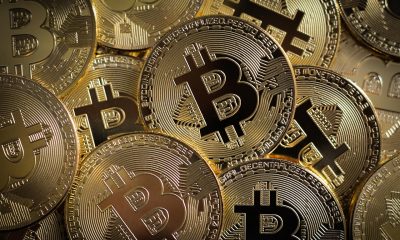
 Blockchain1 week ago
Blockchain1 week agoBitcoin Price Could Rally To $110,000 ATH As These Macroeconomic Factors Align – Crypto News
-

 others6 days ago
others6 days agoEUR/JPY steadies near 169.00 as traders await the next catalyst – Crypto News
-

 Blockchain1 week ago
Blockchain1 week agoCrypto ETPs Post $1.2B Inflows While Spot Prices Drop – Crypto News
-

 Blockchain1 week ago
Blockchain1 week agoAnchorage to Integrate Uniswap to Wallet for Insitutional DeFi – Crypto News
-
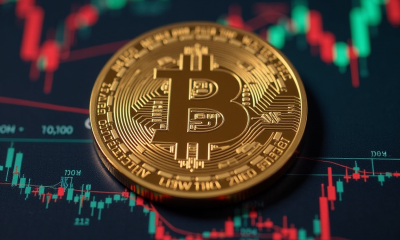
 Cryptocurrency1 week ago
Cryptocurrency1 week agoBitcoin rallies to $106K on Mideast ceasefire news; Circle shares continue explosive climb – Crypto News
-
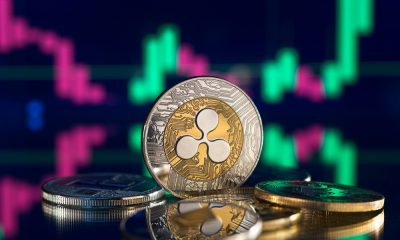
 Cryptocurrency1 week ago
Cryptocurrency1 week agoWhat next for XRP after breaking above the $2.15 resistance? – Crypto News
-

 Technology1 week ago
Technology1 week agoOpenAI quietly removes all mention of Jonny Ive’s ‘IO’, but deal stays on: What you need to know – Crypto News
-
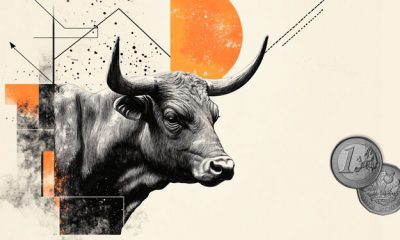
 others1 week ago
others1 week agoEUR/GBP gathers strength above 0.8550 ahead of Eurozone/UK PMI releases – Crypto News
-

 Cryptocurrency1 week ago
Cryptocurrency1 week agoBitcoin bounces after dip to under $99K – Crypto News
-

 others1 week ago
others1 week agoWalmart Ordered To Pay $10,000,000 After Retail Giant Allegedly ‘Turned a Blind Eye’ to Scammers Exploiting Customers – Crypto News
-

 Blockchain1 week ago
Blockchain1 week agoBitcoin Wobbles? Metaplanet Buys Big, Breaks $1 Billion Mark – Crypto News
-

 others1 week ago
others1 week agoIndian Rupee recovers as Oil falls post Iran strike, Fed dovish signals limit US Dollar strength – Crypto News
-

 Blockchain1 week ago
Blockchain1 week agoBearish Breakdown Meets Bullish Flag, Which Will Prevail? – Crypto News
-

 Blockchain1 week ago
Blockchain1 week agoBearish Breakdown Meets Bullish Flag, Which Will Prevail? – Crypto News
-

 Blockchain1 week ago
Blockchain1 week agoCutting Block Times To Boost Performance – Crypto News
-

 others1 week ago
others1 week agoUS stocks downplay Iran retaliation concerns as indices edge higher – Crypto News
-

 others1 week ago
others1 week agoBank of America, Netflix and Apple Customers Targeted by Widescale Google Search Scams: Report – Crypto News
-

 others1 week ago
others1 week agoTariffs may be adding a quarter of a percentage point to inflation right now – Crypto News
-

 Technology1 week ago
Technology1 week agoUS judge rules Anthropic’s use of books for AI training is fair use: All you need to know – Crypto News
-

 Technology1 week ago
Technology1 week agoOpenAI and Jony Ive’s AI hardware ambitions hit roadblock over trademark dispute: Report – Crypto News
-

 Technology1 week ago
Technology1 week agoBest laptops under ₹40,000 (June 2025) with latest processors, SSD storage, and Windows 11 features, Top 10 picks – Crypto News
-

 Technology1 week ago
Technology1 week agoTurkey plans stricter crypto rules to fight money laundering – Crypto News
-

 others1 week ago
others1 week agoWinnebago Industries (WGO) tops Q3 earnings estimates – Crypto News
-

 De-fi7 days ago
De-fi7 days agoBarclays to Ban Crypto Purchases via Credit Card – Crypto News
-

 others6 days ago
others6 days agoAI-Focused Layer-1 Blockchain Altcoin SAHARA Flames Out Following New Binance Listing – Crypto News
-

 Cryptocurrency5 days ago
Cryptocurrency5 days agoTRON price forecast as USDT supply surpasses $80 billion – Crypto News
-
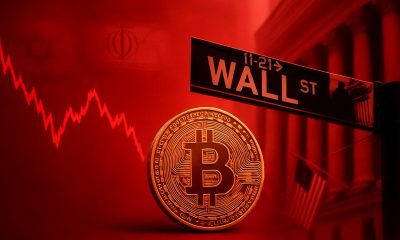
 De-fi1 week ago
De-fi1 week agoBitcoin Slides Below $102,000 as Israel–Iran Clash Triggers $500 Million Crypto Liquidations – Crypto News
-

 Technology1 week ago
Technology1 week agoTop 10 8kg washing machines in June 2025 worth checking if you want a balance of space, speed, and value – Crypto News
-

 others1 week ago
others1 week agoFactSet research (FDS) Q3 earnings lag estimates – Crypto News
-

 De-fi1 week ago
De-fi1 week agoPayments Giant Fiserv to Roll Out ‘Bank-Friendly’ Stablecoin on Solana – Crypto News
-

 Technology1 week ago
Technology1 week agoGoogle introduces AI-powered Chromebook Plus 14: Features, specifications, and more – Crypto News
-

 Cryptocurrency1 week ago
Cryptocurrency1 week agoPolymarket ‘politics’ markets surge, Celestia rethinks consensus – Crypto News
-

 others1 week ago
others1 week agoBitcoin (BTC) and Ethereum (ETH) Lead $1,240,000,000 of Inflows to Crypto Products Despite Geopolitical Tensions: CoinShares – Crypto News
-

 others1 week ago
others1 week agoGerman IFO Business Climate Index rises further to 88.4 in June vs. 88.3 expected – Crypto News
-

 others1 week ago
others1 week agoJerome Powell testifies Fed is well-positioned to wait to learn more about economy – Crypto News
-

 De-fi1 week ago
De-fi1 week agoDragonfly-Backed Codex Launches Blockchain for Stablecoins with Native USDC Support – Crypto News
-

 Blockchain1 week ago
Blockchain1 week agoTaker Buy Volume Spikes Sharply – Crypto News
-

 Technology1 week ago
Technology1 week agoUS judge rules Anthropic’s use of books for AI training is fair use: All you need to know – Crypto News



![IONQ Elliott Wave technical analysis [Video]](https://dripp.zone/news/wp-content/uploads/2025/07/IONQ-Elliott-Wave-technical-analysis-Video-Crypto-News-400x240.jpg)
![IONQ Elliott Wave technical analysis [Video]](https://dripp.zone/news/wp-content/uploads/2025/07/IONQ-Elliott-Wave-technical-analysis-Video-Crypto-News-80x80.jpg)


